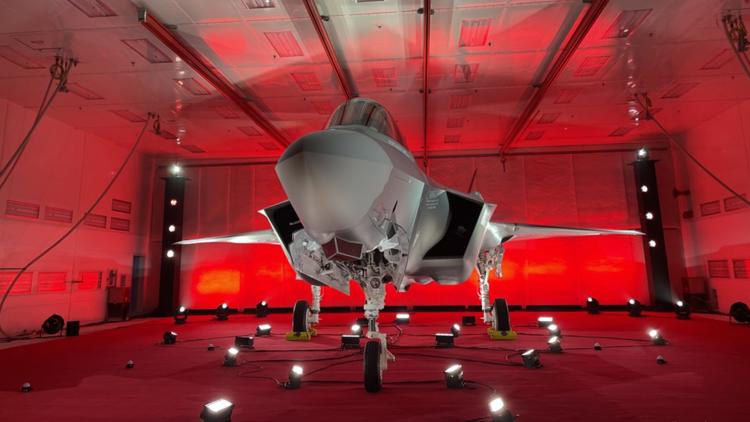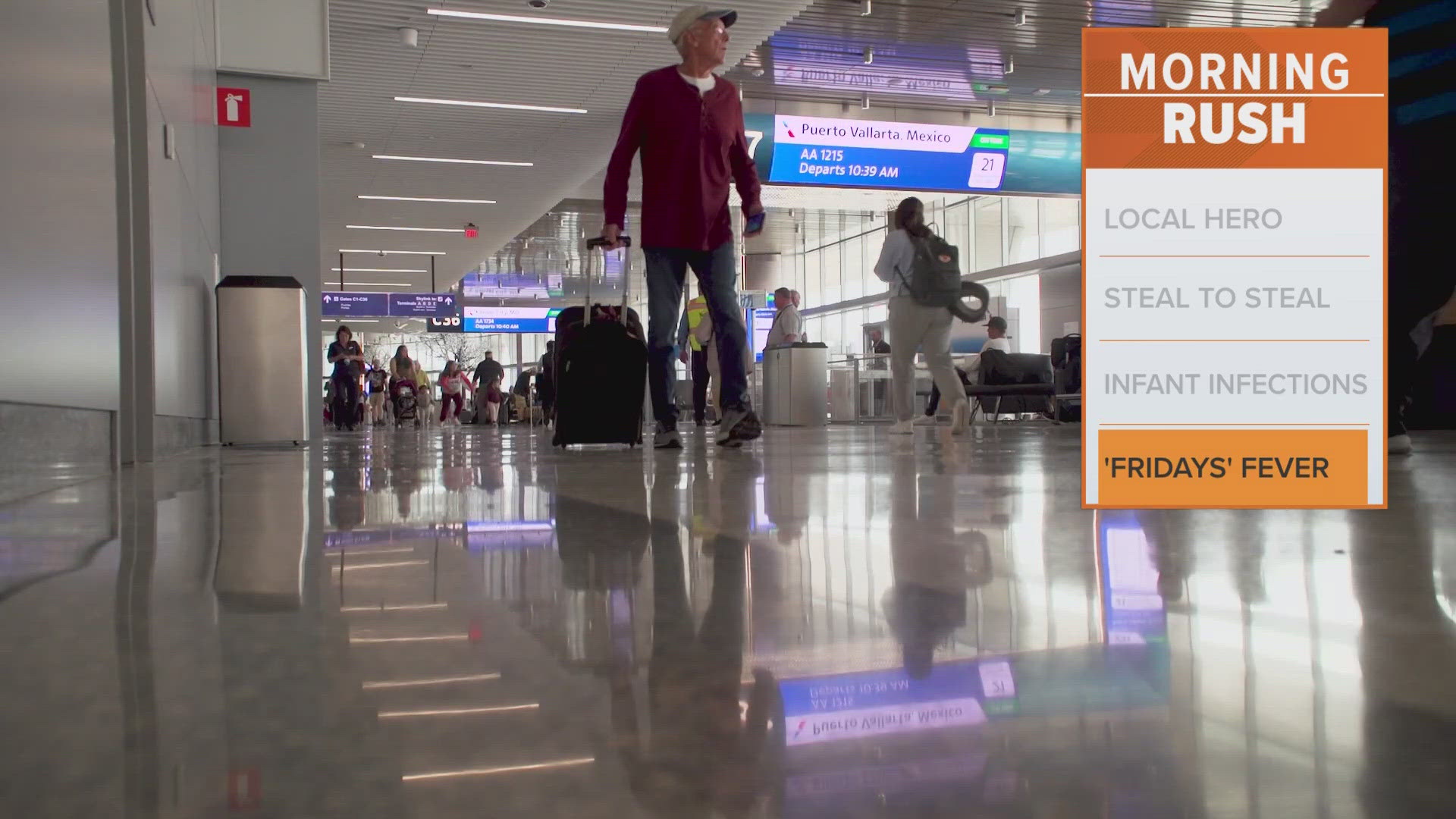FORT WORTH, Texas — This story was originally published by our content partners at the Dallas Business Journal. Read the original version here.
As dramatic music swelled and a red laser in the shape of a F-35 fighter jet floated across a wall of the stage inside one of Lockheed Martin Aeronautic's Fort Worth buildings, officials from the U.S. and Poland saw curtains drop – unveiling the first F-35A jet the company is delivering to the Poland.
The ceremony, known as a "rollout," signals the first jet the company hands over to another allied country to start training their pilots how to use the aircraft. It's the first of 32 jets Poland will receive. The country signed a $4.6 billion deal with Lockheed in 2020. Greg Ulmer, president of Lockheed Aeronautics, said during the ceremony that the rollout is representative of the Fort Worth plant's legacy. Since 1942, the Fort Worth plant has assembled and delivered more than 7,000 aircraft.
"The impact is made possible through our close partnership with our local community and the strong collaboration with allies around the globe," he said during a speech.
The international demand is good news for Fort Worth — Lockheed assembles the F-35 at a plant in Fort Worth. The plant employs 18,700 people and is the top employer in Tarrant County, according to county data.
But while the plant has steady demand to assemble aircraft, Lockheed Martin is still navigating supply chain and software delays that slow down the process of delivery. A Government Accountability Office report released in May showed parts produced by contractors, such as engines produced by Pratt & Whitney, are being delivered late, causing the jets also to be delivered late. At the assembly line in Fort Worth, most screens showed parts shortages that weren't available in the warehouse.
The Pentagon recently started accepting the jets again after temporarily halting acquisitions for more than a year due to delays with its "Tech Refresh 3" software update, which updates the jet's core processor. While the initial update has been installed, enabling pilots from the U.S. and countries like Poland to train for combat in the jets, the second update to use won't occur until next year, Ulmer said. The supply chain, in general, is very fragile, Ulmer said.
"If you think on the backside of [COVID-19], I think a lot of people think we have a really healthy supply chain," he said. "It is stressed. It is strained in all different kinds of industries. So that is a concern."
Ulmer said Lockheed is working with suppliers and seeking multiple sources of material to create a more robust supply chain. He said Poland could play a part in that, potentially producing parts for F-35, F-16 and Black Hawk helicopters. He also said the company is implementing new technology to aid technicians with the assembly process, such as virtual reality goggles that show where to attach parts.
Poland is one of 13 other countries that operate the F-35, Ulmer said. More countries could be on the way. Greece recently signed on for 20 jets, with an option for 20 more in July, and Romania is in talks to also order the jets. But the wait to actually get the aircraft could be long, said J.J. Gertler, senior associate with the Center for Strategic and International Studies.
"There's basically a 10-year waiting list," Gertler said. "So if a country comes in now, they either get at the end of that line, or they cut a deal with the [F-35 Joint Program Office] or one of the other countries to move their jets back."
But if you ask a Polish official such as Major General Ireneusz Nowak, inspector of Polish Air Force, he will say the fighter jet is essential for national defense in light of Russia's invasion in Ukraine.
"We are joining a strong coalition of 5th generation fighters across Europe, bolstering air superiority through allied deterrence," Nowak said.
The Poland rollout ceremony is the 11th so far. A Lockheed spokesperson said Finland's rollout will be next, but won't be this year.



